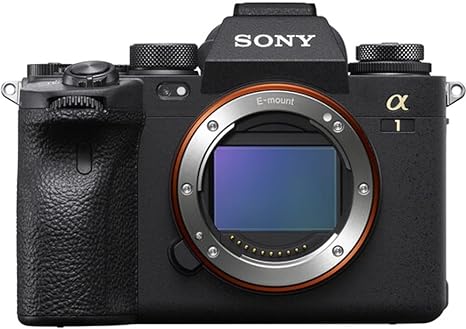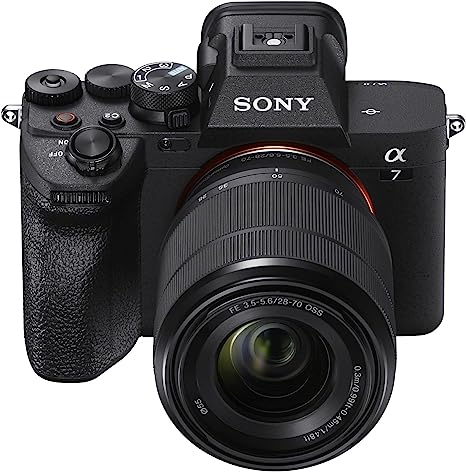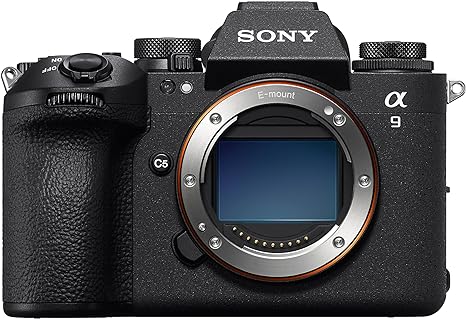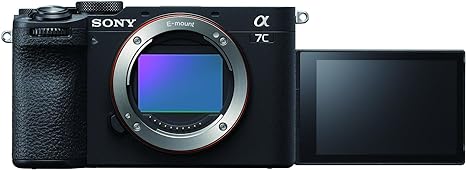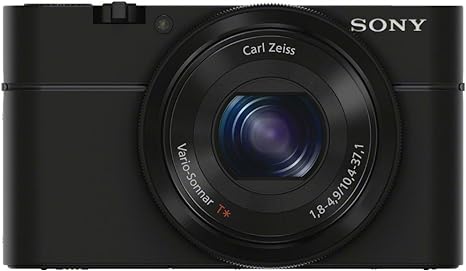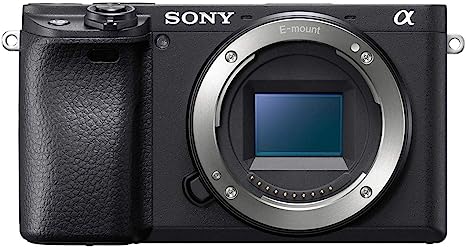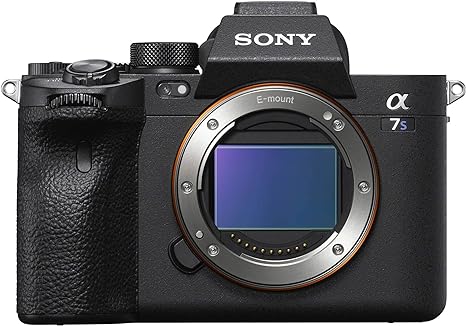Sony Best Cameras for Photography : A Thorough Review
Introduction
Sony has consistently been at the forefront of innovation in the world of photography. From professional-grade mirrorless cameras to versatile compact options, Sony offers something for every photographer. This review explores why Sony cameras stand out in the competitive camera market and highlights the features that make them the preferred choice for photography enthusiasts and professionals alike.
Why Sony Cameras Are the Best in Their Range
Sony cameras have redefined photography with their advanced technology and exceptional versatility. Here’s why they outperform competitors:
- Exceptional Image Quality
- High-resolution sensors deliver sharp and vibrant images.
- Advanced color science ensures true-to-life color reproduction.
- Industry-Leading Autofocus
- Sony’s Real-Time Eye Autofocus ensures precision in portraits.
- Fast and reliable tracking for moving subjects in dynamic shots.
- Wide Range of Options
- Mirrorless cameras cater to professionals with full-frame sensors.
- Compact models like the RX100 series are perfect for travel and casual photography.
- Innovative Video Capabilities
- 4K and even 8K recording options for cinematic video.
- Professional-grade features like S-Log profiles and 10-bit recording.
- Durability and Design
- Weather-sealed bodies for use in various conditions.
- Ergonomically designed for comfort during extended shoots.
- Lens Ecosystem
- A wide array of high-quality lenses for every need.
- Compatibility with third-party lenses for added flexibility.
Sony continues to push boundaries in photography with cutting-edge technology, robust designs, and unmatched performance. Whether you’re a beginner or a seasoned pro, Sony cameras promise to elevate your craft to new heights.Here are some of sony best camera range review:
Sony A1 Camera Review
The Sony A1 stands at the pinnacle of Sony’s camera lineup in 2024. Designed for professionals, it features a 50.1MP full-frame sensor and can shoot at an astonishing 30fps. This camera is ideal for high-speed photography and video production, including 8K video recording.
Sensor and Image Quality:
- High-Resolution Full-Frame CMOS Sensor: The A1 boasts a 50.1MP stacked Exmor RS CMOS sensor, delivering exceptional image quality with excellent low-light performance and a wide dynamic range.
- Fast Readout Speeds: The stacked sensor design enables incredibly fast readout speeds, minimizing distortion and rolling shutter artifacts – perfect for capturing fast-paced action or high-resolution sports photography.
- 15-Stop Dynamic Range: The A1 captures a vast amount of detail in both highlights and shadows, offering greater flexibility for creative editing in post-production.
Autofocus and Performance:
- Fast Hybrid AF System: The A1 features Sony’s most advanced autofocus system yet, with 759 phase-detection points covering a wide area of the sensor. This translates to lightning-fast and accurate subject tracking, even for fast-moving objects or erratic movements.
- Real-time Eye AF: Sony’s renowned real-time eye autofocus system ensures precise focus on your subject’s eyes, whether it’s a person or an animal, making it ideal for portraiture and wildlife photography.
- AI-powered Subject Tracking: The A1’s artificial intelligence (AI) helps predict subject movement and maintain sharp focus, even on unpredictable subjects.
Shooting Speed and Burst Mode:
- Ultra-Fast Shooting: The A1 is capable of capturing images at an astonishing 30 frames per second (fps) with mechanical shutter and even faster with electronic shutter, making it ideal for capturing fleeting moments or high-speed action sequences.
- Blackout-Free Shooting: The high-resolution electronic viewfinder (EVF) offers a smooth and blackout-free viewing experience even during high-speed bursts, allowing you to precisely track your subject without interruption.
Videography Features:
- 8K Video Recording: The A1 is a true hybrid camera, excelling in both stills and video. It offers stunning 8K video recording at up to 30 fps, perfect for professional videographers and filmmakers seeking ultra-high-resolution footage.
- 10-bit 4K Recording: For even greater creative flexibility, the A1 also supports 10-bit 4K recording at various frame rates, allowing for professional color grading and achieving stunning results.
Pros:
- Exceptional Image Quality: The 50.1MP sensor provides incredibly detailed images, suitable for large prints and professional work.
- Ultra-fast Continuous Shooting: At 30fps, it’s perfect for sports, wildlife, and any fast-action photography.
- Comprehensive Video Capabilities: Capable of 8K video recording, making it a powerful tool for videographers.
- Robust Build: The camera is built to withstand tough conditions, making it durable for professional use.
Cons:
- Very Expensive: The price tag is high, making it less accessible for amateur photographers.
- Large File Sizes: The high-resolution images and 8K videos require significant storage capacity.
- Complex Menu System: The advanced features and settings can be overwhelming for beginners.
Sony A7R V Camera Review
The Sony A7R V is a powerhouse for photographers who need extremely high resolution. With a 61MP full-frame sensor, it delivers unparalleled detail and dynamic range, making it perfect for landscape and studio photography.Here’s a breakdown of its most compelling features:
Unmatched Resolution:
- 61MP Full-Frame Exmor R BSI CMOS Sensor: The heart of the A7R V lies in its colossal 61MP full-frame back-illuminated (BSI) CMOS sensor. This translates to incredibly detailed images, ideal for professional photographers who require exceptional image quality for landscapes, portraits, commercial work, and even heavy cropping.
Image Quality and Processing:
- Exceptional Detail: The high megapixel count captures intricate details, allowing for large prints or significant cropping without compromising image quality.
- Improved BIONZ XR Processing Engine: Sony’s latest BIONZ XR processing engine ensures fast image processing and superior image quality with low noise levels, even in low-light conditions.
- 15-Stop Dynamic Range: The A7R V captures a vast amount of detail in both highlights and shadows, offering greater flexibility for creative editing in post-production.
Autofocus and Performance:
- Fast Hybrid AF System: The A7R V features Sony’s advanced hybrid autofocus system with 693 phase-detection points covering a wide area of the sensor. This ensures accurate subject tracking for various shooting scenarios.
- Real-time Tracking and Eye AF: The A7R V boasts real-time tracking powered by AI to maintain focus on fast-moving subjects or erratic movements. Additionally, real-time eye autofocus keeps your subject’s eyes sharp, be it a person or an animal.
- 10fps Continuous Shooting: While not the fastest on the market, the A7R V offers a respectable 10 frames per second continuous shooting for capturing fleeting moments.
Advanced Video Features:
- 8K Video Recording: The A7R V isn’t just for stills – it also offers impressive 8K video recording at 24 fps, catering to videographers who require ultra-high-resolution footage.
- 10-bit 4K Recording: For more frame rate flexibility, the A7R V supports 10-bit 4K recording at various frame rates, allowing for professional color grading and achieving stunning results.
- Internal Recording Options: High-quality internal recording options include 4K 60p for smooth video and professional codecs for efficient editing workflows.
Pros:
- Stunning High-resolution Images: The 61MP sensor offers exceptional detail, perfect for large prints and extensive cropping.
- Excellent Dynamic Range: Great for capturing details in both highlights and shadows.
- Versatile Video Capabilities: Supports 4K video, suitable for professional videography.
- In-body Stabilization: Reduces camera shake, improving image quality in low light and handheld shooting.
Cons:
- High Cost: The camera is expensive, which might be a barrier for some users.
- Large and Heavy: The size and weight can be cumbersome for prolonged handheld use.
- Slower Continuous Shooting: Compared to other models, its continuous shooting speed is slower, making it less ideal for fast-action photography.
Sony Alpha 7 IV Camera Review
Balancing performance and price, the Sony Alpha 7 IV is a versatile full-frame mirrorless camera. It features a 33MP sensor and is capable of 4K video at 60fps. This camera is suitable for a wide range of photographic applications, from portraiture to action.
A Well-rounded Sensor for Stills and Video:
- 24MP Exmor R CMOS Sensor: The a7 IV boasts a 24MP full-frame Exmor R CMOS sensor, striking a balance between high resolution for detailed images and good low-light performance.
- Fast Readout Speeds: The sensor design enables fast readout speeds, minimizing distortion and rolling shutter artifacts, making it suitable for fast-paced action or sports photography.
- 15-Stop Dynamic Range: Capture a vast amount of detail in highlights and shadows for creative editing freedom in post-production.
Enhanced Autofocus System:
- 759 Phase-Detection Points: The a7 IV features Sony’s advanced hybrid autofocus system with an impressive 759 phase-detection points covering a wide area of the sensor.
- Real-time Tracking and Eye AF: AI-powered real-time tracking helps maintain focus on fast-moving subjects, while real-time eye autofocus ensures sharp focus on your subject’s eyes, be it a person or an animal.
- Improved Subject Recognition: The autofocus system boasts improved subject recognition capabilities, including for animals and birds, for more reliable focus tracking.
Impressive Shooting Speed and Performance:
- 10fps Continuous Shooting: Capture fleeting moments with a respectable 10 frames per second continuous shooting speed.
- Blackout-Free Electronic Viewfinder (EVF): Enjoy a smooth and blackout-free viewing experience through the high-resolution EVF, even during continuous shooting bursts.
- 5-Axis In-Body Image Stabilization (IBIS): The a7 IV features a 5-axis in-body image stabilization system that helps minimize camera shake and ensure sharp images and videos even when shooting handheld.
Video Capabilities for Content Creators:
- 4K 60p Video Recording: The a7 IV caters to videographers with stunning 4K 60p video recording, offering excellent detail and smooth motion for professional video projects.
- 10-bit Internal Recording: Achieve greater creative flexibility with 10-bit internal recording, allowing for professional color grading in post-production.
Pros:
- High-quality Image Output: The 33MP sensor provides sharp, detailed images.
- Robust Build Quality: The camera is well-built and durable.
- Excellent Autofocus Performance: Fast and accurate eye detection makes it great for portrait and action photography.
- Good Battery Life: Allows for extended shooting sessions without frequent battery changes.
Cons:
- Moderately Expensive: Though more affordable than the A1 and A7R V, it’s still a significant investment.
- Not as High Resolution as A7R Series: Might not be suitable for those who need extremely high-resolution images.
- Some Users May Find it Bulky: The size might be a bit large for those who prefer more compact cameras.
Sony A9 II Camera Review
The Sony A9 II is crafted for sports and wildlife photographers who require speed and reliability. It offers a 24.2MP full-frame sensor with blackout-free continuous shooting at 20fps. Its advanced autofocus system ensures you never miss a moment.
24.2MP Full-frame Exmor RS CMOS Sensor
- Delivers high-quality images with excellent detail and dynamic range.
- Stacked sensor design allows for faster data processing and reduced rolling shutter effect.
BIONZ X Image Processor
- Ensures fast performance and low noise at high ISOs.
- Supports high-speed continuous shooting and advanced AF/AE calculations.
20fps Blackout-free Continuous Shooting
- Can shoot up to 20 frames per second with no viewfinder blackout, allowing photographers to track fast-moving subjects seamlessly.
693-Point Phase Detection Autofocus System
- Covers approximately 93% of the image area for accurate subject tracking.
- Real-time Eye AF and Real-time Tracking enhance focus accuracy for both stills and video.
5-axis In-body Image Stabilization
- Compensates for five types of camera shake, allowing for sharper handheld shots, especially in low light conditions.
4K Video Recording
- Full pixel readout without pixel binning provides high-quality 4K video.
- S-Log3 and HLG (Hybrid Log-Gamma) support for greater dynamic range and color grading flexibility.
Dual SD Card Slots
- Both slots support UHS-II for faster read and write speeds.
- Provides redundancy and extended storage capacity for professional workflows.
Ethernet and 5GHz Wi-Fi Connectivity
- Enables fast and stable data transfer for remote shooting and quick image delivery.
- Ideal for professional environments where speed is crucial.
Pros:
- Blazing Fast Continuous Shooting: 20fps shooting speed makes it ideal for capturing fast-moving subjects.
- Reliable Autofocus Performance: Tracks subjects accurately and quickly, essential for sports and wildlife photography.
- Durable and Weather-sealed Body: Can withstand harsh conditions, perfect for outdoor photography.
- Dual Card Slots: Provides ample storage and redundancy for important shoots.
Cons:
- Lower Resolution Compared to A7R Series: The 24.2MP sensor might not be sufficient for large prints or detailed cropping.
- High Cost: The camera is expensive, reflecting its professional-grade features.
- Video Capabilities Not as Advanced as A1: While good, its video features aren’t as comprehensive as those of the Sony A1.
Sony A7C Camera Review
For those seeking a compact full-frame camera, the Sony A7C offers a 24.2MP sensor and 4K video capabilities in a lightweight and portable design. It’s an excellent choice for travel and street photography. Here are some feartures of Sony A7C Camera:
Highly Capable Full-Frame Sensor:
- 24MP Exmor R BSI CMOS Sensor: Despite its compact size, the A7C packs a punch with a 24MP full-frame Exmor R back-illuminated (BSI) CMOS sensor. This sensor delivers excellent image quality with good low-light performance and the ability to capture detailed images.
- Fast Readout Speeds: Similar to its larger siblings, the A7C benefits from fast readout speeds, minimizing distortion and rolling shutter artifacts, making it suitable for capturing fast-paced action or sports photography.
- 15-Stop Dynamic Range: The sensor offers a wide dynamic range, allowing you to capture a vast amount of detail in highlights and shadows for greater creative flexibility during post-production editing.
Advanced Autofocus System in a Compact Body:
- 693 Phase-Detection Points: The A7C features Sony’s impressive hybrid autofocus system with 693 phase-detection points covering a wide area of the sensor, ensuring accurate focus tracking for various shooting scenarios.
- Real-time Tracking and Eye AF: Similar to other high-end Sony cameras, the A7C boasts AI-powered real-time tracking to maintain focus on fast-moving subjects and real-time eye autofocus to keep your subject’s eyes sharp, be it a person or an animal.
- Touch Tracking: The A7C introduces a convenient touch tracking feature on the fully articulating touchscreen LCD. Simply touch your subject on the screen, and the camera will maintain focus as you track them through the frame.
Impressive Performance for Photography and Video:
- 10fps Continuous Shooting: Capture fleeting moments with a respectable 10 frames per second continuous shooting speed.
- 5-Axis In-Body Image Stabilization (IBIS): Enjoy sharp images and videos even when shooting handheld thanks to the A7C’s 5-axis in-body image stabilization system.
- 4K 30p Video Recording: The A7C caters to videographers with 4K 30p video recording, offering good detail for capturing your travels and creative projects.
- 10-bit Internal Recording: Achieve greater flexibility in post-production with 10-bit internal recording, allowing for professional color grading.
Pros:
- Full-frame Quality in a Compact Body: Offers the benefits of a full-frame sensor in a smaller, lighter package.
- Good Battery Life: Can last through extended shooting sessions.
- Excellent Autofocus System: Fast and accurate, great for capturing spontaneous moments.
- Ideal for Travel and On-the-go Shooting: Its compact size makes it easy to carry around.
Cons:
- Smaller Electronic Viewfinder: Some users may find the EVF less comfortable to use compared to larger models.
- Limited Physical Controls: Fewer buttons and dials might be a downside for users who prefer manual adjustments.
- Lacks Some Advanced Features: Does not include some high-end features found in larger models like the A1.
Sony ZV-E10 Camera Review
Targeted at vloggers and content creators, the Sony ZV-E10 is an APS-C mirrorless camera that combines portability with powerful video features. It includes a 24.2MP sensor and a vari-angle LCD screen perfect for selfie shooting. Let’s explore the key features that make the ZV-E10 a vlogging powerhouse:
Ultra-Portable Design:
- Compact and Lightweight: The ZV-E10 boasts a remarkably compact and lightweight design, making it ideal for travel vlogging and everyday content creation where portability is paramount.
- Comfortable Grip: Despite its compact size, the ZV-E10 features a comfortable grip for stable handheld shooting during vlogs.
Exceptional Image Quality for Vlogs:
- APS-C Exmor CMOS Sensor: The ZV-E10 features a high-quality APS-C Exmor CMOS sensor, delivering excellent image quality with sharp details and good low-light performance for capturing clear vlogs in various lighting conditions.
- Large Background Blur: The large APS-C sensor allows for achieving a beautiful background blur (bokeh effect), separating your subject from the background for a more professional look.
Focus on the Vlogger:
- Vari-Angle Touchscreen LCD: The fully articulating touchscreen LCD allows for convenient framing and monitoring of shots from various angles, perfect for vloggers who frequently shoot themselves.
- Product Showcase Setting: This unique feature automatically adjusts focus when transitioning between your face and a product you’re showcasing in your vlog, ensuring both elements remain sharp.
- Background Defocus Button: Instantly achieve a shallow depth of field with a dedicated background defocus button, simplifying focus transitions during vlogs.
Crystal-Clear Audio Recording:
- Built-in Directional Microphone: The ZV-E10 features a built-in directional microphone designed to capture clear audio directly from the front, minimizing background noise for crisp voice recordings.
- Wind Reduction Technology: The microphone incorporates wind reduction technology to minimize wind noise during outdoor vlogs, ensuring clear audio even in challenging environments.
- Headphone Jack: Monitor your audio in real-time through the integrated headphone jack for optimal audio control during recording.
Additional Vlogging-Friendly Features:
- Easy-to-Use Interface: The ZV-E10 boasts a user-friendly interface with simplified controls and settings, making it easy for beginners to jump right into vlogging.
- Vertical Video Recording: The camera seamlessly supports vertical video recording, ideal for content creation specifically tailored for social media platforms.
- Livestreaming Capabilities: Stream directly to your favorite platforms with the ZV-E10’s built-in livestreaming capabilities, allowing you to connect with your audience in real-time.
Pros:
- Affordable and Accessible: Priced competitively, making it accessible to a wide range of users.
- Versatile for Vlogging and Content Creation: Features designed specifically for video creators, such as the vari-angle screen and enhanced audio.
- Excellent Autofocus with Eye Tracking: Ensures sharp focus on subjects, ideal for video work.
- Lightweight and Portable: Easy to carry and handle, perfect for on-the-go content creation.
Cons:
- No In-body Stabilization: Can result in shaky footage if not used with a stabilized lens or gimbal.
- APS-C Sensor, Not Full-frame: May not deliver the same image quality as full-frame cameras.
- Limited Battery Life for Extended Shoots: Battery may need frequent recharging during long sessions.
Sony RX100 VII Camera Review
The Sony RX100 VII is a premium compact camera that fits powerful features into a pocket-sized body. It includes a 1-inch sensor, 24-200mm zoom lens, and 4K video recording, making it perfect for travel and daily photography. Here’s a closer look at its key features, performance, and who it might best suit.
- Ultra-Compact Design: The RX100 VII boasts a remarkably compact and lightweight design, making it the ultimate portable camera for travel and everyday photography on the go.
- Large 1-Inch Sensor: Despite its compact size, the RX100 VII packs a powerful punch with a 1-inch sensor, delivering exceptional image quality that surpasses typical smartphone cameras.
- Versatile 24-200mm Equivalent Zoom Lens: The versatile 24-200mm equivalent zoom lens offers wide-ranging capability, allowing you to capture everything from expansive landscapes to detailed close-up portraits with a single lens.
- Fast Autofocus: The RX100 VII features a fast and reliable autofocus system with real-time tracking, ensuring sharp focus on even fast-moving subjects.
- 4K HDR (HLG) Video Recording: Capture vibrant and detailed video content for vlogs or travel videos with 4K HDR (HLG) video recording capabilities.
Performance:
- Image Quality: While not on par with larger Sony cameras due to the smaller sensor size, the RX100 VII delivers excellent image quality for a compact camera, especially in good lighting conditions. In low-light situations, some noise might be noticeable.
- Autofocus: The real-time tracking autofocus performs admirably, keeping subjects sharp even during movement.
- Video: The 4K HDR video recording offers impressive detail and dynamic range, making it suitable for vloggers and casual videographers.
- Low-Light Performance: Low-light performance can be a limitation due to the smaller sensor. Images might exhibit more noise compared to larger Sony cameras.
Who is it for?
- Casual Photographers: The RX100 VII is ideal for casual photographers who prioritize portability and ease of use. Its compact size makes it a great everyday carry camera.
- Travelers: The compact design and versatility of the zoom lens make it a perfect travel companion for capturing memories on the go.
- Vloggers: 4K video recording with HDR capabilities makes it suitable for vloggers seeking a compact camera for content creation.
Pros:
- Highly Portable: Fits easily in a pocket or small bag, perfect for travel.
- Excellent Image Quality for a Compact Camera: The 1-inch sensor delivers great photos in various lighting conditions.
- Versatile Zoom Range: The 24-200mm lens covers a wide range of focal lengths.
- Fast Autofocus: Quick and reliable, ensuring sharp images
Cons:
- Expensive for a Compact Camera: Higher price point compared to other compact cameras.
- Small Controls Can Be Fiddly: Buttons and dials may be difficult to use for those with larger hands.
- Limited Battery Life: Requires frequent recharging during extensive use.
Overall, the Sony RX100 VII remains a compelling choice for those seeking a high-quality, ultra-compact camera. Its impressive zoom range, fast autofocus, and 4K video capabilities make it a versatile option for casual photographers, travelers, and vloggers who value portability without sacrificing image quality.
Sony A6400 Camera Review
The Sony A6400, despite not having a “c” variant, remains a popular choice for aspiring photographers and videographers. Let’s explore its strengths and weaknesses to see if it’s the right camera for you.Let’s delve into what makes this APS-C mirrorless camera stand out:
Image Quality:
- 24.2MP APS-C CMOS Sensor: The a6400 features a 24.2MP APS-C CMOS sensor that delivers high-resolution images with good detail and low-noise performance in well-lit conditions.
- Fast Bionz X Image Processor: Sony’s Bionz X image processor ensures fast image processing and high image quality, even at higher ISOs.
Autofocus and Performance:
- 425 Phase-Detection Points: The a6400 boasts a fast and reliable hybrid autofocus system with an impressive 425 phase-detection points covering a wide area of the sensor. This translates to quick and accurate focus acquisition, even on moving subjects.
- Real-time Eye AF: Sony’s well-regarded real-time eye autofocus keeps your subject’s eyes in sharp focus, whether capturing portraits of people or animals.
- 11fps Continuous Shooting: With a respectable 11 frames per second continuous shooting speed, the a6400 is capable of capturing fleeting moments or fast-paced action sequences.
Video Capabilities:
- 4K HDR (HLG) Recording: The a6400 caters to videographers with 4K HDR (HLG) recording capabilities, offering stunning detail and a wider dynamic range for capturing vibrant and detailed video content.
- Internal Recording Options: The camera offers a variety of internal recording options, including 4K recording at various frame rates and Full HD recording with high frame rates suitable for slow-motion effects.
- Microphone Input: The a6400 features a microphone input for connecting an external microphone, allowing for improved audio quality in your videos.
Usability and Ergonomics:
- Vari-angle Touchscreen LCD: The fully articulating touchscreen LCD allows for comfortable shooting from various angles, making it useful for vlogging or low-angle shots. The touchscreen functionality offers intuitive control over settings and image playback.
- Improved Menu System: Sony has refined the menu system compared to previous models, making it more user-friendly for navigating various camera settings.
Pros:
- Compact Powerhouse: The A6400 is incredibly compact and lightweight, making it ideal for travel and everyday shooting.
- Fast and Accurate Autofocus: Boasting a robust autofocus system with 425 phase-detection points, the A6400 excels at tracking even fast-moving subjects, ensuring sharp focus.
- Excellent Image Quality: The 24.2MP APS-C CMOS sensor delivers impressive image quality, particularly in good lighting conditions, offering detailed results for everyday photography.
- 4K Video Recording: Capture stunning 4K video footage at 30 fps, catering to content creators who require high-resolution video capabilities.
- Fast Continuous Shooting: With an 11 fps continuous shooting speed (mechanical shutter only), the A6400 allows you to capture fleeting moments with impressive burst performance.
Cons:
- Limited Low-Light Performance: The APS-C sensor struggles in low-light situations compared to full-frame cameras, and images might exhibit more noise.
- Single SD Card Slot: The A6400 only has one SD card slot, limiting redundancy for storing photos and videos, especially for professional use.
- Lack of In-Body Image Stabilization (IBIS): The absence of IBIS means you might need a tripod or rely on lens stabilization for sharp handheld shots at slower shutter speeds.
- Menu System Complexity: The menu system can be overwhelming for beginners, requiring some time to navigate and adjust various camera settings efficiently.
While the Sony a6400 doesn’t have a full-frame sensor, it offers a compelling feature set for its class. The combination of good image quality, fast autofocus, 4K video capabilities, and a user-friendly design makes it a versatile camera for photographers and videographers on the rise.
Sony A7S III Camera Review
The Sony A7S III is a mirrorless powerhouse targeted towards professional videographers and photographers who prioritize exceptional low-light performance and cutting-edge video capabilities. Here’s a look at its impressive strengths and a few trade-offs to consider:
Sensor and Low-Light Prowess:
- 12.1MP Full-Frame Back-illuminated Exmor R CMOS Sensor: The heart of the A7S III lies in its unique 12.1MP full-frame back-illuminated Exmor R CMOS sensor. This translates to exceptional low-light performance with incredible sensitivity (expanded ISO up to 409600) and minimal noise, allowing you to capture stunning images and videos even in extremely dark environments.
Unmatched Video Features:
- 4K Recording at Up to 120fps: The A7S III reigns supreme in the video world. It offers a game-changing 4K recording capability at up to 120 frames per second, ideal for capturing incredibly smooth slow-motion footage, perfect for professional videographers and filmmakers.
- 10-bit Internal Recording with Various Codecs: For maximum flexibility in post-production, the A7S III boasts 10-bit internal recording with various codecs, including professional formats like XAVC S-I, allowing for extensive color grading and achieving stunning results.
- S-Log Profiles: The camera features S-Log profiles, offering a wider dynamic range and flatter colors, perfect for professional color grading and achieving a specific creative look.
Exceptional Autofocus and Performance:
- Advanced Hybrid Autofocus System with 759 Phase-Detection Points: Sony’s advanced hybrid autofocus system with an impressive 759 phase-detection points ensures razor-sharp focus, even on fast-moving subjects in low-light conditions. This allows for precise tracking and clear capture of critical moments.
- 15-Stop Dynamic Range: Capture a vast amount of detail in both highlights and shadows with the A7S III’s 15-stop dynamic range. This offers incredible creative freedom in post-production, allowing you to recover detail in blown-out highlights or dark shadows.
- 5-Axis In-Body Image Stabilization (IBIS): Minimize camera shake for sharp handheld video and photos, even at slower shutter speeds, thanks to the robust 5-axis in-body image stabilization system. This is crucial for low-light shooting where camera shake can be more prominent.
Additional Professional Features:
- Enhanced Weather Sealing: The A7S III boasts a robust and weather-sealed magnesium alloy body, built to withstand challenging shooting environments, making it ideal for professional use in various conditions.
- High-Resolution Electronic Viewfinder (EVF): A high-resolution electronic viewfinder offers a clear and smooth viewing experience, even during fast-paced shooting or video recording.
- Dual CFexpress Type A Card Slots: The A7S III features dual CFexpress Type A card slots, supporting the fastest available memory card format for smooth high-resolution recording and rapid data transfer, crucial for professional workflows.
Pros:
- Full-Frame Back-Illuminated Exmor R CMOS Sensor: The A7S III boasts a 12.1MP full-frame back-illuminated Exmor R CMOS sensor, delivering unmatched low-light performance with incredible sensitivity and minimal noise, even in extremely dark environments.
- Phenomenal Autofocus: Sony’s advanced hybrid autofocus system with 759 phase-detection points ensures razor-sharp focus, even on fast-moving subjects in low-light conditions.
- Unparalleled Video Features: The A7S III reigns supreme in the video world. It offers 4K recording at up to 120 fps, 10-bit internal recording with various codecs, and S-Log profiles for exceptional color grading flexibility.
- 15-Stop Dynamic Range: Capture a vast amount of detail in both highlights and shadows for incredible creative freedom in post-production.
- 5-Axis In-Body Image Stabilization (IBIS): Minimize camera shake for sharp handheld video and photos, even at slower shutter speeds.
- Enhanced Weather Sealing: The robust and weather-sealed magnesium alloy body is built to withstand challenging shooting environments.
Cons:
- Lower Megapixel Count: Compared to high-resolution cameras, the 12.1MP sensor might not be ideal for photographers who prioritize capturing extreme detail in landscapes or portraits where heavy cropping is necessary.
- Limited Still Photography Features: The A7S III prioritizes video, so some features typically found in high-resolution cameras, like high-speed continuous shooting, might be limited.
- Price Point: The A7S III carries a premium price tag, making it an investment for serious professionals.
Overall, the Sony A7S III is a phenomenal camera for videographers and low-light photographers. Its unmatched low-light performance, exceptional video features, and robust build quality make it a top contender. However, the lower megapixel count and potentially limited still photography features might be drawbacks for some users.
Sony A6600 CR Camera Review
The Sony a6600 is a mid-range APS-C mirrorless camera aimed at aspiring photographers and videographers seeking a balance between portability, good image quality, and advanced features. It serves as an update to the popular a6500 model. Here’s a closer look at this camera’s strengths and weaknesses: Here’s a breakdown of its key functionalities:
Image Quality and Processing:
- 24.2MP APS-C CMOS Sensor: The A6600 packs a 24.2MP APS-C CMOS sensor, delivering sharp images with good detail and low-noise performance in well-lit environments.
- BIONZ X Image Processor: Sony’s BIONZ X image processor ensures fast image processing and high image quality, even at higher ISOs. This allows for maintaining good image quality in low-light situations.
Autofocus and Performance:
- Fast Hybrid AF System: The A6600 boasts a fast and reliable hybrid autofocus system with 425 phase-detection points covering a wide area of the sensor. This translates to quick and accurate focus acquisition on both still subjects and moving targets.
- Real-time Tracking and Eye AF: Sony’s well-regarded real-time tracking autofocus ensures your subject stays in sharp focus, even during action sequences. Additionally, real-time eye autofocus keeps your subject’s eyes sharp, be it people or animals.
- 11fps Continuous Shooting: With a respectable 11 frames per second continuous shooting speed, the A6600 is capable of capturing fleeting moments or fast-paced action.
Video Capabilities:
- 4K HDR (HLG) Recording: The A6600 caters to videographers with 4K HDR (HLG) recording capabilities, offering stunning detail and a wider dynamic range for capturing vibrant and detailed video content.
- Internal Recording Options: The camera offers a variety of internal recording options, including 4K recording at various frame rates and Full HD recording with high frame rates suitable for slow-motion effects.
- Microphone Input: The A6600 features a microphone input for connecting an external microphone, allowing for improved audio quality in your videos.
Usability and Ergonomics:
- Fully Articulating Touchscreen LCD: The A6600 features a fully articulating touchscreen LCD, allowing for comfortable shooting from various angles, making it useful for vlogging or low-angle shots. The touchscreen functionality offers intuitive control over settings and image playback.
- Improved Menu System: Sony has refined the menu system compared to previous models, making it more user-friendly for navigating various camera settings.
Pros:
- 24.2MP APS-C CMOS Sensor: The a6600 features a 24.2MP APS-C CMOS sensor, delivering sharp images with good low-light performance for its class.
- Fast Hybrid Autofocus System: The camera boasts a fast and reliable hybrid autofocus system with 425 phase-detection points, ensuring sharp focus on subjects, even when moving quickly.
- Real-time Tracking and Eye AF: Sony’s well-regarded real-time tracking autofocus keeps your subject in focus, while real-time eye AF ensures sharp focus on eyes, making it ideal for portraits and animal photography.
- Improved Battery Life: Compared to its predecessor, the a6600 boasts a significantly improved battery life, allowing you to capture more photos and videos on a single charge.
- 5-Axis In-Body Image Stabilization (IBIS): This feature helps minimize camera shake for sharper images and videos, even when shooting handheld at slower shutter speeds.
- 4K HDR (HLG) Video Recording: The a6600 caters to videographers with 4K HDR (HLG) recording capabilities, offering stunning detail and a wider dynamic range for capturing vibrant video content.
Cons:
- APS-C Sensor Size: Compared to full-frame cameras, the APS-C sensor offers a smaller image plane, which can result in a shallower depth of field and potentially more noticeable noise in low-light situations.
- Limited Physical Controls: The a6600 has fewer physical controls compared to some higher-end Sony cameras, requiring more reliance on menus for adjusting settings, which can be less efficient.
- Menu System: While improved from previous models, the menu system can still be overwhelming for complete beginners navigating camera settings for the first time.
- Missing Built-in Flash: Unlike its predecessor, the a6600 lacks a built-in flash, so you’ll need to rely on external lighting for low-light situations where flash is necessary.
While the A7S III prioritizes low-light performance and video features, it still offers good image quality for stills photography. However, the lower megapixel count might not be ideal for photographers who require extreme detail in their images.
FAQ: Choosing the Right Sony Camera
Q. What is the best Sony camera for beginners in photography?
A.Sony offers user-friendly models designed for beginners with easy-to-use features and affordable pricing and professionals can explore Sony’s advanced models like the Alpha series, which provide exceptional image quality, manual controls, and high-end performance.
Q. Full-frame vs. APS-C sensor Which is right for me?
A. Full-frame sensors offer better low-light performance, shallower depth of field, and higher resolution, but come with a larger size and price tag. APS-C sensors are more compact and affordable, but may have limitations in low light and background blur.
Q. Do I need a full-frame camera for professional photography?
A. Not necessarily. Many professional photographers achieve excellent results with APS-C cameras. Full-frame offers advantages, but other factors like lenses and skills also play a crucial role.
Q. What is Sony’s Alpha series known for?
A. Alpha cameras are known for their excellent image quality, fast autofocus systems, and advanced video capabilities.
Q. What is Sony’s Real-time Eye AF?
A.This innovative autofocus system automatically detects and tracks a subject’s eyes, ensuring sharp focus for portraits and animal photography.
Q. What is image stabilization (IS)?
A. Image stabilization helps minimize camera shake for sharper images and videos, especially at slower shutter speeds or when shooting handheld.
General Sony Camera Questions:
Q. How do I transfer photos from my Sony camera to my computer?
A. You can connect your camera to your computer using a USB cable and utilize Sony’s software (Imaging Edge) or your preferred photo management software.
Q. Where can I buy the Sony Camera ?
A. The Sony Camera can be purchased from the Sony Camera website link.They are also available from various models in Sony Cameras.
These FAQs provide comprehensive information about the Sony Camera, addressing common inquiries to help potential buyers make informed decisions.
Conclusion
Sony has established itself as a leader in the camera industry, delivering unparalleled performance, advanced features, and versatility for photographers at all levels. Sony is not best in its picture quality but also good in price range for every class.Whether you’re capturing breathtaking landscapes, dynamic action shots, or professional-grade videos, Sony cameras consistently rise to the occasion. Their innovative technology, robust lens ecosystem, and user-friendly designs make them a reliable choice for anyone seeking the best in photography. With a commitment to pushing the boundaries of imaging, Sony remains a trusted companion for capturing life’s most memorable moments.

